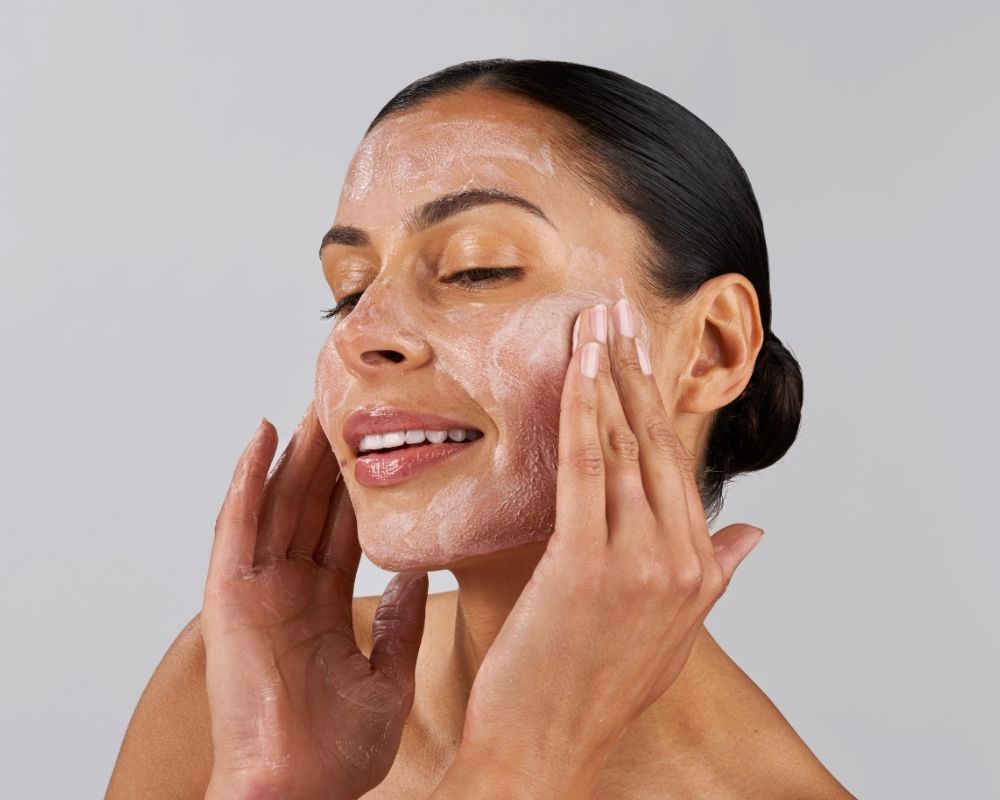The 3 Types of Exfoliation (& Which One's Right For You)

No matter your age or skin concerns, exfoliating is one of the very best things you can do for your skin.
There are so many exfoliation benefits for the skin - increased collagen production and skin cell turnover, smoother and clearer-looking skin texture, and an instant radiance, just to name a few.
But (yes, there's a 'but'), using the wrong exfoliant for your skin may impair your barrier, causing skin to look and feel irritated, congested, flaky, dry or all of the above.
To help break down this crucial step in your skincare routine, let's break down the 3 different types of exfoliation and their benefits.
Why Should I Exfoliate?
Aside from the instant radiance and next-day glow, Alpha-H's Clinical Training and Education Manager LeeAnne Leslie says:
“By the time we reach our mid-20s, our skin’s ability to exfoliate naturally starts to slow. This leaves a buildup of dead skin cells on the surface, causing skin to appear dull, textured and more prone to breakouts.”
Regular exfoliation helps your skin to keep doing what it does naturally, only faster. Plus, it helps your other products work harder (why waste your serums on dead skin cells?).
3 Types of Exfoliation

1. Physical Exfoliants
-
What are they? The most common type of physical exfoliants are face scrubs, or dual-action physical and chemical exfoliants like the Alpha-H Micro Super Scrub
-
How do they work? Physical exfoliants buff away dead cells using a physical or manual component; think of it as a manual process
-
Best for: Those with normal, oily, combo or thickened skin, or anyone who prefers the feeling of a physical scrub
2. Chemical Exfoliants
-
What are they? Products that contain exfoliating acids, like Alpha-H Liquid Gold with Glycolic Acid and Alpha-H Clear Skin Tonic with Salicylic Acid
-
How do they work? Chemical exfoliants break apart the glue holding dead cells together using a chemical process, and work on both surface level and deeper layers of the skin
-
Best for: Most skin types who want to use a leave-on treatment 3 times a week - Glycolic Acid is recommended to target signs of ageing and uneven tone and texture, while Salicylic Acid is great for oily, combination and blemish-prone skin
3. Enzymatic Exfoliants
-
What are they? Products containing exfoliating enzymes, like enzyme polishes, cleansers or masks - like Alpha-H Illuminating Enzyme Polish
-
How do they work? Similarly to exfoliating acids, enzymes remove dead skin cells but in a gentler way than chemical exfoliants, and they only work on the very outer surface of the skin
-
Best for: Sensitive skin-havers, anyone who hasn’t exfoliated before (and is a bit nervous about it!), or those who prefer using a gentler exfoliant, more often
- Tags: all Skin Science

